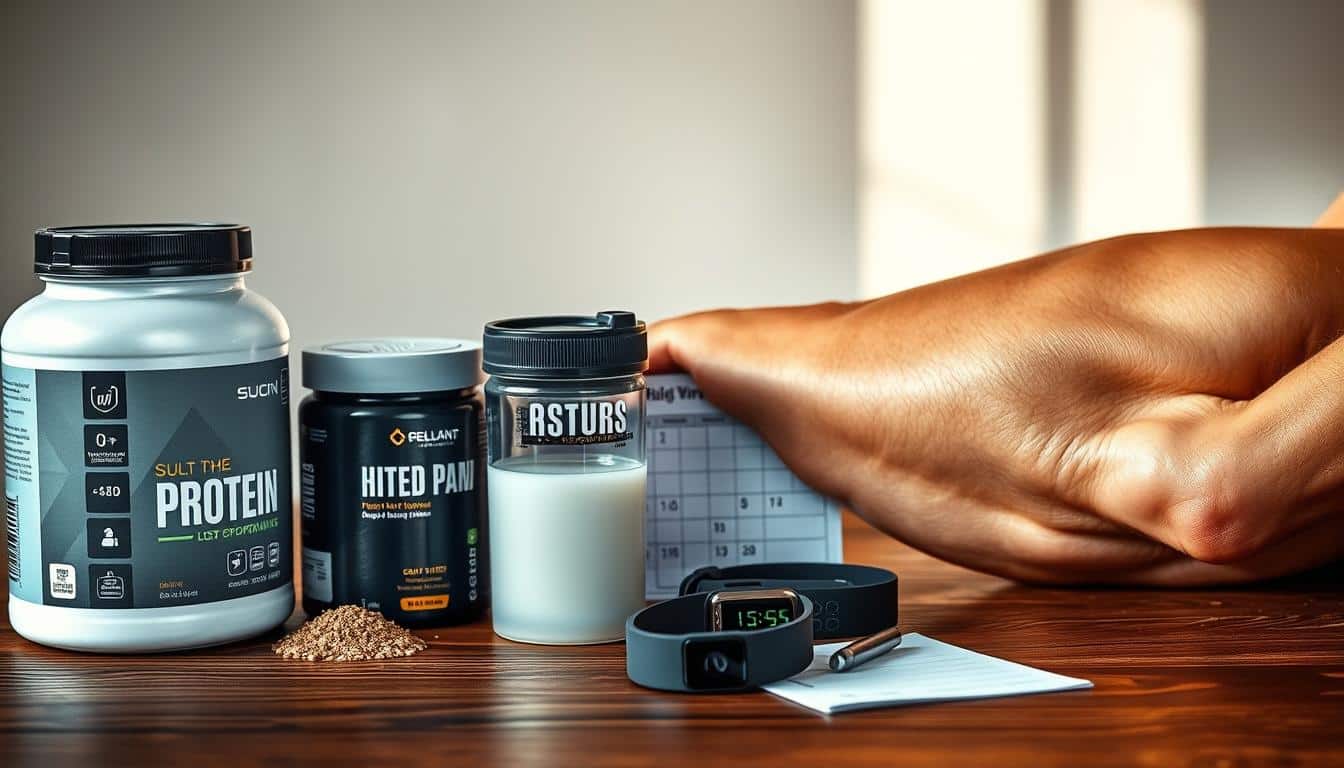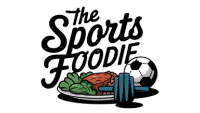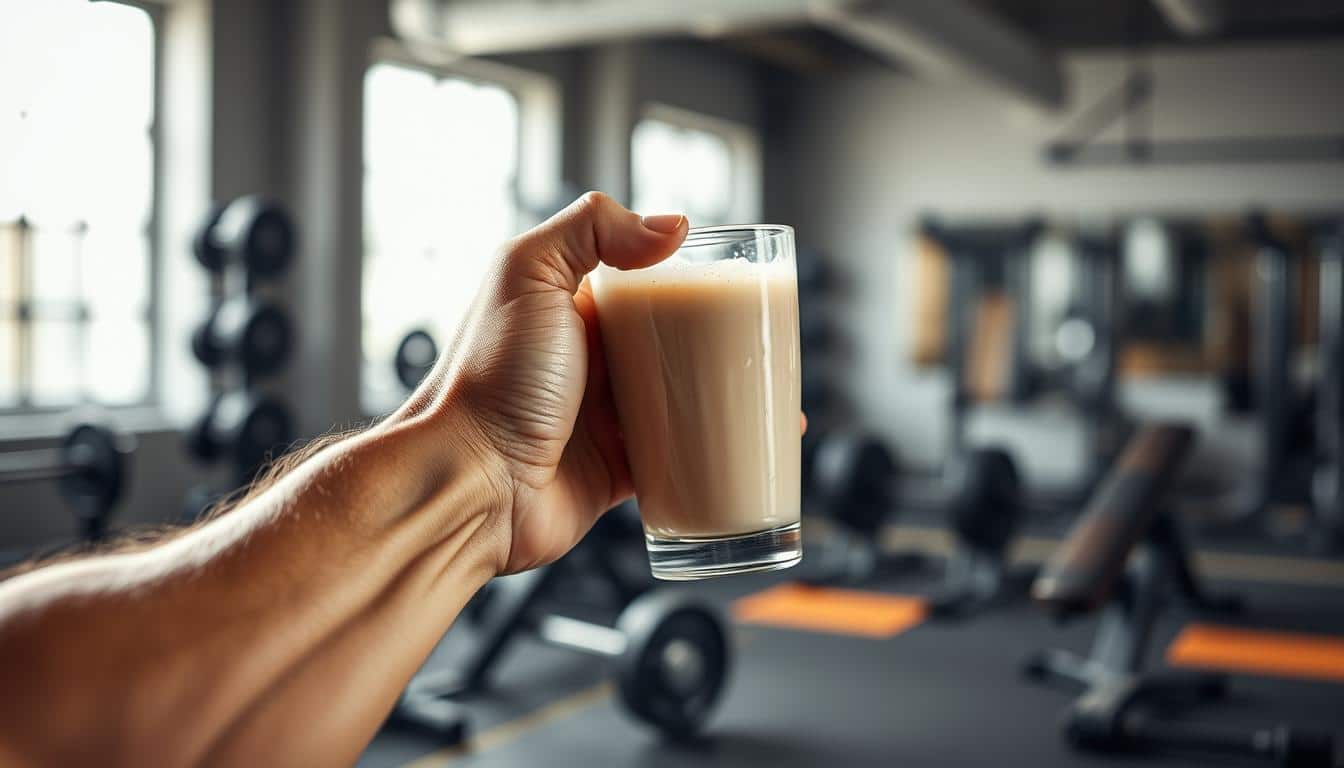You’ve likely faced the locker-room debate: rush to chug a shake immediately or relax and refuel later? The fitness world buzzes with conflicting claims about optimal recovery strategies, leaving many wondering what truly works. I’ve been there too—staring at my shaker bottle, questioning if minutes matter as much as influencers claim.
Recent studies reveal surprising truths. While the classic “anabolic window” theory pushed quick consumption, newer research suggests your daily nutrition habits outweigh clock-watching. That doesn’t mean timing is irrelevant—it just needs context. We’ll break down how your training style and goals influence what’s right for you.
This isn’t about rigid rules or missed opportunities. It’s about understanding how your body uses nutrients to rebuild stronger. By the end, you’ll craft a personalized approach that fits your routine—no panic-gulping required.
Introduction

Navigating the maze of nutrition advice, one question keeps popping up: does when you eat matter as much as what you eat? If you’ve ever felt confused by competing claims about fueling your body, you’re not alone. Athletes, weekend warriors, and casual gym-goers all share this dilemma—how to maximize gains without obsessing over the clock.
Research shows mixed results on whether precise schedules boost results. While some studies highlight potential benefits of strategic nutrient intake, others emphasize consistent daily habits as the real game-changer. This doesn’t mean you should ignore schedules entirely, but rather balance them with overall nutrition quality.
Let’s face it—most people want simple, actionable steps. You might be juggling work, family, and workouts, making rigid routines impractical. The good news? Building strength doesn’t require military precision. Small tweaks to your existing meals can often deliver better results than frantic post-exercise rituals.
My goal here isn’t to add more noise. Instead, I’ll help you filter through the science to find strategies that fit your life. Whether you’re aiming to sculpt lean tissue or simply recover faster, understanding these principles puts you back in control.
What Is Protein Timing After Workout?
Picture this: you’re finishing a tough session, sweat dripping, muscles buzzing. Nearby, someone’s gulping a shake like it’s a race against time. That’s nutrient timing in action—the practice of aligning meals with physical activity to boost results. It’s not about strict rules, but smart planning.

Think of your body as a construction site. After exercise, it’s primed to use building materials efficiently. Many athletes prioritize carbs and amino acids during this phase to refuel energy stores and repair tissue. The idea isn’t new—it’s rooted in decades of sports science exploring how our systems absorb nutrients best.
You might have heard gym friends swear by that post-exercise shake. While urgency isn’t always necessary, consistency matters. Spreading intake across the day—like having a balanced meal pre-training and a snack later—often works better than fixating on one window.
This approach helps you work with your biology, not against it. Whether you’re lifting weights or training for endurance, aligning meals with movement patterns can amplify progress. The key? Focus on what fits your schedule while keeping overall nutrition balanced.
Benefits of Post-Workout Protein Intake
Ever wonder why trainers always emphasize refueling post-exercise? Your muscles work like demolition crews during training—breaking down fibers to rebuild them stronger. Providing nutrients afterward acts like delivering fresh materials to a construction site. This process fuels growth and helps you achieve visible gains over time.
Here’s the science: Exercise creates microscopic tears in muscle tissue. Your body repairs these by fusing fibers together, increasing their size and strength. Without adequate fuel, this rebuilding phase slows down. That’s where smart nutrition steps in—think of it as giving your body the tools it needs to upgrade itself.
| Benefit Type | Immediate Intake (0-2 hours) | Later Intake (2+ hours) |
|---|---|---|
| Muscle Repair | Kickstarts recovery process | Supports ongoing repair |
| Energy Replenishment | Quick glycogen restoration | Sustained energy balance |
| Soreness Reduction | May decrease next-day stiffness | Long-term inflammation control |
Many athletes report less soreness when they prioritize post-training meals. You’ll recover faster between sessions, allowing more consistent workouts. But here’s the kicker—the repair cycle lasts up to 24 hours. While immediate intake helps, your total daily nutrition matters most.
Don’t stress if life delays your meal. Focus on consistent, quality eating patterns rather than stopwatch precision. Your muscles aren’t checking the clock—they’re waiting for the right building blocks to grow stronger.
Understanding the Anabolic Window
Let’s tackle the fitness myth that’s caused more clock-watching than airport departures. The anabolic window concept suggests there’s a limited period post-exercise when your body absorbs nutrients best. While urgency was once emphasized, modern science paints a different picture.
Window Duration: Fact vs Fiction
Early guidelines pushed a 30-minute rush to refuel. Newer studies reveal this window stretches far longer—up to 4-6 hours. Your muscles remain receptive to nutrients throughout this extended period, letting you prioritize convenience without sacrificing results.
What Research Tells Us
Recent analyses show muscle sensitivity peaks within the first hour but continues for several hours. One review found no significant difference in gains between those eating immediately versus two hours later. Here’s how old and new recommendations compare:
| Aspect | Old Belief (30-Minute Rule) | Current Evidence |
|---|---|---|
| Timeframe | 15-60 minutes | Up to 6 hours |
| Urgency Level | Critical | Flexible |
| Focus | Single meal timing | Daily nutrient totals |
This doesn’t mean you should skip post-training meals. It simply removes the panic. Whether you eat at the gym or an hour later, consistency matters more than counting minutes. Your body’s repair mechanisms work overtime—not just during a mythical golden hour.
Pre-Workout Protein: Why It Matters
Ever rushed to the gym on an empty stomach, thinking fasted training burns more fat? Here’s what most don’t realize: Your body starts borrowing from muscle stores when you exercise without fuel. This stealthy energy raid can undermine your progress—even if you eat well later.
Why Fasted Training Demands Extra Care
When you train without proper fuel, your system enters survival mode. It breaks down muscle tissue for energy like a woodstove burning furniture when the firewood runs out. This catabolic state doesn’t magically stop when you finish lifting—it lingers, eating into your gains.
A simple solution? Consume 15-20 grams of protein 30 minutes before training. Think of it as hanging a “Do Not Disturb” sign on your muscle fibers. Studies show this practice:
- Reduces exercise-induced muscle breakdown by 40-50%
- Boosts amino acid availability during lifts
- Creates better conditions for growth post-workout
You don’t need a full meal. A quick shake or Greek yogurt works wonders. I’ve seen clients transform their results simply by adding this step—no other changes to their routine. Your muscles aren’t picky about gourmet meals; they just need the right signals to stay protected.
Remember: What you do before training sets the stage for recovery. While post-workout meals get all the attention, smart pre-training choices help you keep what you’ve worked so hard to build.
Daily Protein Distribution for Muscle Growth
Here’s a common mistake I see: folks skipping morning fuel only to devour a steak dinner. While it feels satisfying, your muscles prefer steady support over grand gestures. Think of your body as a garden—it thrives with regular watering, not occasional floods.
Research reveals a game-changing pattern. When participants ate balanced amounts across meals (about 30g each), their 24-hour muscle-building response outperformed those loading up at dinner. Here’s how the numbers stacked up:
| Meal | Even Distribution | Skewed Distribution |
|---|---|---|
| Breakfast | 31g | 11g |
| Lunch | 30g | 16g |
| Dinner | 33g | 63g |
Notice the evening overload? That feast-or-famine approach leaves muscles underfed for hours. Your system can only use so much at once—like trying to fill a cup that’s already full.
Aim for 25-35g per main meal. This keeps amino acids flowing steadily, creating ideal conditions for growth. No need to measure obsessively—just include quality sources like eggs, lentils, or Greek yogurt each time you eat.
Remember: Your body repairs tissue all day, not just post-workout. Consistent nourishment beats heroic doses. Start tomorrow by adding a veggie omelet to breakfast—it’s simpler than you think!
Protein Requirements: RDA vs. Optimal Intake
Have you ever wondered why official nutrition guidelines feel out of sync with your gym results? The government’s Recommended Daily Allowance (RDA) suggests 0.36 grams per pound of body weight—enough to prevent deficiency but not enough to fuel progress. Let’s unpack what your muscles actually need to thrive.
Here’s the gap: The RDA works for couch potatoes, not lifters. Research shows active individuals need nearly double that amount—around 0.72 grams per pound daily. For a 150-pound person, that jumps from 54g to 109g per day. Think of it like gas for your car—you need more fuel when driving cross-country than idling in the driveway.
| Measurement | RDA | Optimal for Training |
|---|---|---|
| Grams per pound | 0.36 | 0.72 |
| Grams per kg | 0.8 | 1.6 |
| 150lb Daily Total | 54g | 109g |
Why the big difference? The RDA focuses on basic survival, while muscle growth demands extra building blocks. Spreading your intake across meals—like 30g at breakfast, lunch, and dinner—works better than cramming it all at night. Your body can only use so much at once.
Don’t stress about hitting exact numbers daily. Aim for 1.2-1.7 grams per kilogram as a flexible range. Track your intake for three days—you might be surprised how small adjustments create big changes. Remember: Your muscles aren’t checking math equations. They’re responding to consistent support.
: Best Protein Sources for Muscle Recovery
Let’s explore your plate—not the clock—for muscle repair secrets. Whether you’re grilling chicken or blending a smoothie, quality sources make all the difference. Your muscles crave specific building blocks, and the right picks accelerate recovery like premium gasoline boosts engine performance.
Animal-based options pack a punch with essential amino acids ready for immediate use. Chicken breast, salmon, and Greek yogurt deliver complete profiles that kickstart tissue repair. For quick post-training absorption, many athletes reach for whey—it’s like hitting the express lane for nutrient delivery.
Plant-powered eaters aren’t left out. Lentils, quinoa, and tofu provide robust foundations when combined strategically. Pair rice with beans or hummus with whole-grain pita to create complete amino acid profiles. Research shows blending sources throughout the day works better than relying on single ingredients.
Here’s your cheat sheet for smart choices:
- Whey: Fast-acting option ideal post-sweat
- Eggs: Versatile middle-ground with balanced absorption
- Chickpeas: Fiber-rich plant source with muscle-friendly nutrients
Don’t stress about perfection. A salmon dinner one day and lentil curry the next both contribute to growth. Your muscles care more about consistent quality than rigid meal plans. Mix animal and plant foods to cover all bases—your taste buds and gains will thank you.
Protein Shake Options and Their Uses
Let’s cut through the supplement aisle confusion. Not all powders work the same—your goals determine which shake makes sense. Whether you’re blending post-lift or prepping a bedtime drink, strategic choices maximize results.
Whey protein tops the list for fast absorption. Derived from milk, it delivers 20-25 grams per scoop within minutes. Perfect when you need quick fuel after training. Its rapid digestion helps muscles recover faster between sessions.
Prefer something slower? Casein—another milk derivative—releases amino acids gradually. Ideal before bed, it supports overnight repair. Mix it into pudding or blend with almond milk for sustained nourishment.
Plant-based options shine for dietary restrictions. Pea powder offers 15-20 grams per serving and works well in smoothies. Hemp brings omega-3s but lacks some essential aminos. Smart brands combine rice, chia, and pumpkin seeds to create complete profiles.
Use this cheat sheet:
- Post-workout: Whey protein shake (25g)
- Bedtime snack: Casein + berries
- Vegan option: Mixed plant blend + spinach
Got a sweet tooth? Add unflavored powder to pancake batter or oatmeal. One scoop boosts meals by 20-25 grams without changing taste. Your muscles won’t care if it’s baked or blended—they just want the goods.
Scientific Research on Protein Timing
How many times have you seen gym buddies chugging shakes while checking their watches? Science offers clarity amid the noise. Let’s explore what research reveals about nutrient schedules and their real-world impact.
What Studies Reveal
A 12-week trial with college athletes split them into two groups. One consumed supplements around training sessions, while others had them with meals. Results? No difference in muscle growth between the strategies. The takeaway? Daily totals trump clock-watching for most.
Contrast this with a separate study where participants took nutrients pre- and post-lifting. This group gained more lean mass—but they also consumed creatine and carbs. The combo likely boosted results, not just timing alone.
Practical Takeaways
Conflicting research stems from varied methods. Some studies use untrained subjects, others elite athletes. Supplement blends and meal frequencies also differ. This explains why findings vary across groups.
Your best move? Prioritize consistent daily intake first. If you enjoy a post-training shake, keep it—but don’t panic if life delays it. Your muscle-building machinery operates 24/7, not just during a mythical golden hour.
Dispelling Myths About Protein Timing
Let’s clear the air about those locker-room legends you’ve been hearing. The idea that you must guzzle nutrients within minutes of training? That’s like believing you’ll miss sunset if you blink. Recent studies show your body isn’t a ticking time bomb—it’s more adaptable than we once thought.
The “window” concept isn’t broken—it’s just bigger. You’ve got hours, not minutes, to nourish muscles effectively. What matters most? Your total daily intake and meal quality. Obsessing over the clock often distracts from consistent habits that drive real progress.
Here’s the truth: If you’re eating balanced meals throughout the day, you’re already winning. Need quick post-exercise options? Check out our guide to the best shakes for NFL players—practical choices that work for busy schedules.
Don’t let myths steal your peace. Focus on what fuels your body best, whether that’s a shake now or a hearty meal later. Your gains won’t vanish because life got in the way.


